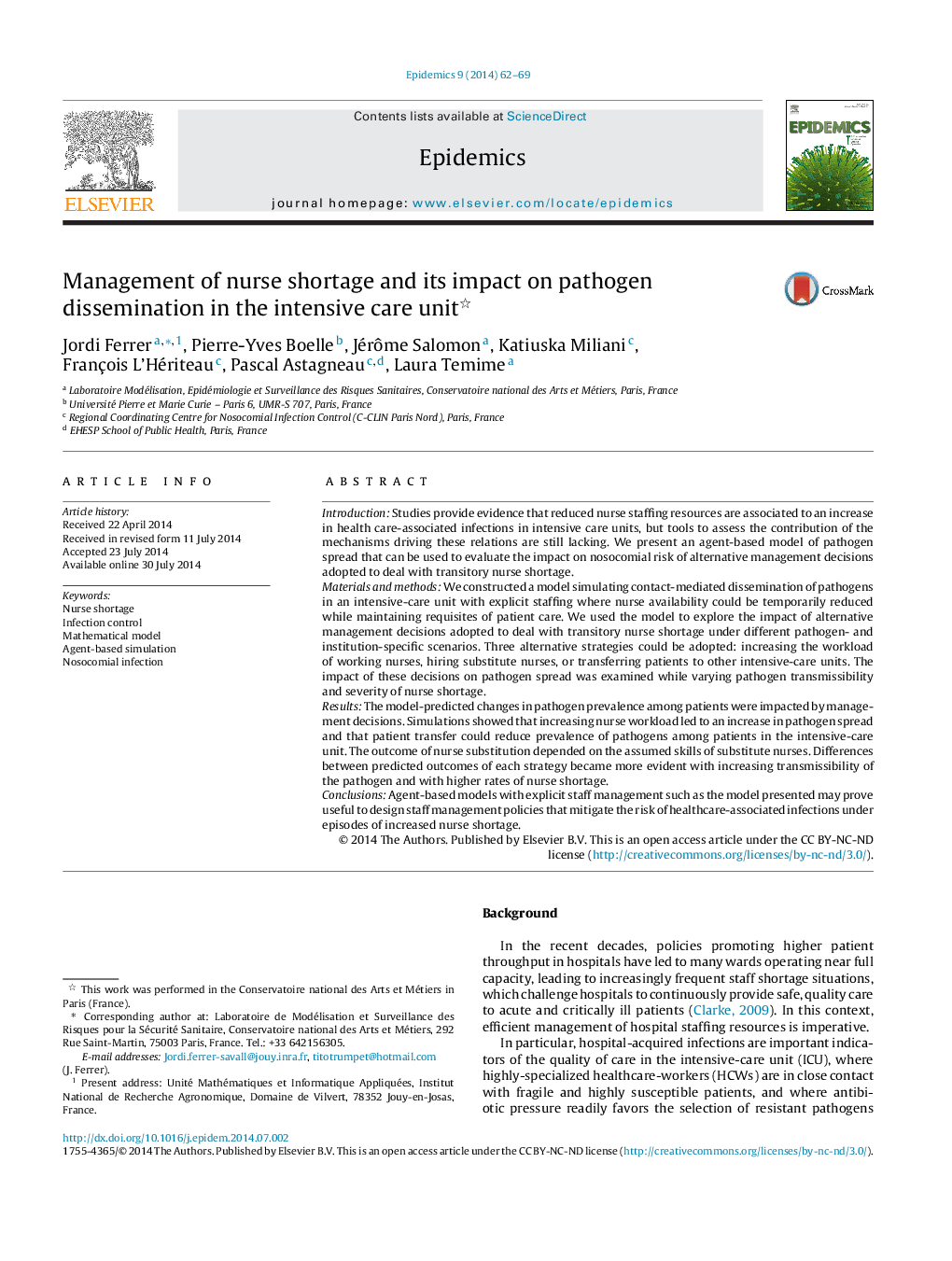| کد مقاله | کد نشریه | سال انتشار | مقاله انگلیسی | نسخه تمام متن |
|---|---|---|---|---|
| 2813596 | 1569438 | 2014 | 8 صفحه PDF | دانلود رایگان |
• We model pathogen spread in an intensive care unit with staff/patient fluxes.
• We examine changes in the prevalence of pathogen colonization.
• We test three prototype strategies to manage temporary nurse shortage.
• Changes in prevalence are mostly driven by modifications of the network of contacts.
• The most risky strategy is to reassign patients to other working nurses.
IntroductionStudies provide evidence that reduced nurse staffing resources are associated to an increase in health care-associated infections in intensive care units, but tools to assess the contribution of the mechanisms driving these relations are still lacking. We present an agent-based model of pathogen spread that can be used to evaluate the impact on nosocomial risk of alternative management decisions adopted to deal with transitory nurse shortage.Materials and methodsWe constructed a model simulating contact-mediated dissemination of pathogens in an intensive-care unit with explicit staffing where nurse availability could be temporarily reduced while maintaining requisites of patient care. We used the model to explore the impact of alternative management decisions adopted to deal with transitory nurse shortage under different pathogen- and institution-specific scenarios. Three alternative strategies could be adopted: increasing the workload of working nurses, hiring substitute nurses, or transferring patients to other intensive-care units. The impact of these decisions on pathogen spread was examined while varying pathogen transmissibility and severity of nurse shortage.ResultsThe model-predicted changes in pathogen prevalence among patients were impacted by management decisions. Simulations showed that increasing nurse workload led to an increase in pathogen spread and that patient transfer could reduce prevalence of pathogens among patients in the intensive-care unit. The outcome of nurse substitution depended on the assumed skills of substitute nurses. Differences between predicted outcomes of each strategy became more evident with increasing transmissibility of the pathogen and with higher rates of nurse shortage.ConclusionsAgent-based models with explicit staff management such as the model presented may prove useful to design staff management policies that mitigate the risk of healthcare-associated infections under episodes of increased nurse shortage.
Journal: Epidemics - Volume 9, December 2014, Pages 62–69
